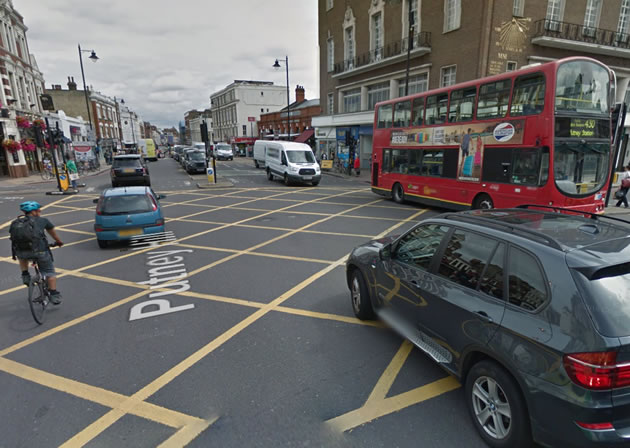Putney Hill Junction Identified as One of London's Most Dangerous
New analysis by TfL shows it has the ninth worst safety record in the capital

Putney Hill junction with Upper Richmond Road. Picture: Google Street View
The junction of Putney Hill and Upper Richmond Road is to be redesigned after a new analysis by Transport for London showed it was one of the most dangerous in the capital. It will now be targeted for safety improvements and continually monitored and review under a new approach.
London’s Walking and Cycling Commissioner, Will Norman, named the 73 junctions in the Capital with the worst safety records based on three years’ data with the junction in Putney having the ninth highest incidence of collisions including those involving pedestrians and cyclists known as vulnerable road users (VRUs) for the purpose of the analysis. Between 2012 and 2015 there were 32 collisions at the Putney Hill/Upper Richmond Road junction 22 of which involved pedestrians and cyclists. All the roads are to become part of a Safer Junctions programme to reduce casualty figures. Feasibility work is underway regarding the Putney Hill junction which will be followed by public consultation in due course.
The list of 73 junctions is now being considered in detail to assess what can be done to make them safer. The current list includes some that have had work recently completed, some have work planned, and others require new safety studies.
21 junctions have had significant improvements made within the last three years. These will now be monitored to ensure that the casualty levels significantly reduce and that lessons are learnt to improve the future design and construction of projects. The Putney Hill junction already had improvements scheduled within TfL’s business plan but these will be reassessed in light of the new analysis.
Will Norman, said: “It’s vital that we target the most dangerous junctions across London if we are to improve our roads for pedestrians and cyclists. That’s why I asked TfL to identify these junctions and why we’re now analysing them in detail to ensure that we are doing all we can to make them safer. This work will allow us to drive forward improvements and be repeated each year to ensure that our work is making a real difference to the Capital’s roads.”
Ben Plowden, TfL’s Director of Surface Strategy and Planning, said: “We’re committed to improving road safety in the Capital and we will only achieve this and encourage more people to walk and cycle if we address safety at many of our road junctions. This new analysis will allow us to target our efforts where it is most needed, and will allow us to closely monitor the effectiveness of what we deliver to ensure we’re always learning from our projects.”
TfL’s new ‘Vision Zero’ approach to reducing road danger is part of the Mayor’s forthcoming Transport Strategy. This means vigorously enforcing traffic law, putting safety at the core of road engineering projects and working to discourage dangerous behaviour on the roads.
April 20, 2017